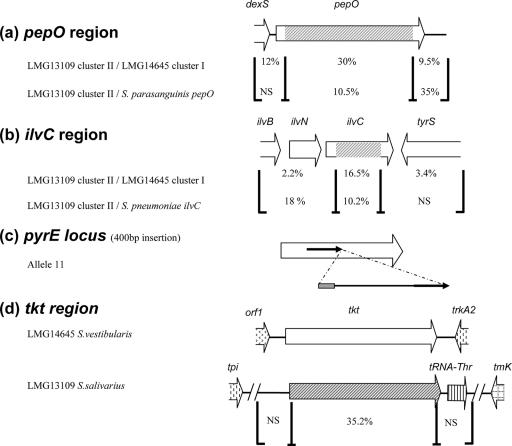FIG. 5.
HGT events detected in S. salivarius pepO, ilvC, pyrE, and tkt genes. Regions where there are high and low levels of diversity are indicated by brackets, and the level of diversity is shown for each region. NS, no significant homology. (a) In the pepO region, 2,095-bp nucleotide sequences of LMG13109 cluster II and LMG14645 cluster I were compared. The regions were compared with the S. parasanguinis pepO region. (b) In the ilvC region, 2,765-bp nucleotide sequences of LMG13109 cluster II and LMG14645 cluster I were compared. The regions were compared with the S. pneumoniae ilvC region. (c) In allele 11 of the pyrE locus, a 234-bp DNA insertion containing 30 bp of S. salivarius IS1139 (gray box) and 204 bp of DNA whose function and origin are unknown is present and is flanked by a 157-bp duplication (arrows). (d) In the tkt region, 2,506-bp nucleotide sequences of S. salivarius LMG13109 and S. vestibularis LMG14645 were compared. orf1 exhibits the highest level of homology to str0310 from S. thermophilus.

